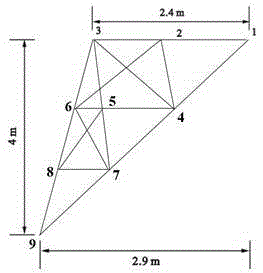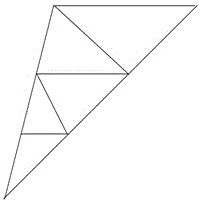Power transmission tower tower-leg auxiliary material topological-structure optimization method based on improved artificial fish swarm algorithm
An artificial fish swarm algorithm and transmission tower technology, which is applied in calculation, data processing application, prediction, etc., can solve problems such as poor optimization results, difficult to switch tower leg auxiliary material configuration, slow optimization speed, etc.
- Summary
- Abstract
- Description
- Claims
- Application Information
AI Technical Summary
Problems solved by technology
Method used
Image
Examples
Embodiment Construction
[0068] The present invention will be described in further detail below in conjunction with the accompanying drawings.
[0069] The invention proposes a topology optimization technology for auxiliary materials of transmission tower legs based on an artificial fish swarm algorithm, and proposes a corresponding improvement strategy. Firstly, the calculation model of the topology optimization of the structure and the calculation criteria of the topological variables are given, then the artificial fish swarm algorithm is described, and the improvement strategy of the field of view and step size and the improvement strategy of foraging behavior are proposed, and finally the improved artificial fish swarm algorithm is established. Fish swarm algorithm for topological configuration optimization. details as follows:
[0070] 1 Optimization theory of transmission tower legs
[0071] The important factors of structural optimization include design variables, design schemes, and optimiza...
PUM
 Login to View More
Login to View More Abstract
Description
Claims
Application Information
 Login to View More
Login to View More - R&D
- Intellectual Property
- Life Sciences
- Materials
- Tech Scout
- Unparalleled Data Quality
- Higher Quality Content
- 60% Fewer Hallucinations
Browse by: Latest US Patents, China's latest patents, Technical Efficacy Thesaurus, Application Domain, Technology Topic, Popular Technical Reports.
© 2025 PatSnap. All rights reserved.Legal|Privacy policy|Modern Slavery Act Transparency Statement|Sitemap|About US| Contact US: help@patsnap.com



